African violets are one of the popular houseplants that come with a bunch of beautiful flowers. These plants are easy to maintain and bloom throughout the year. But sometimes, they refuse to bloom if they are not supported with proper care.
So, in this article, we will discuss how to get an African violet to bloom.
To encourage your African violets to bloom, move them in a brightly lit spot and ensure the humidity is around 60%. Fertilize the plant once a month with 15:30:15 fertilizer to encourage new blooms. Lastly, check for any possible pest or disease and take necessary precautions to prevent the same.
Your African violets won’t bloom if they receive inadequate sunlight, inappropriate temperature, improper watering, lack of humidity, poor fertilization, wrong soil mix, incorrect pot size, or when infected by pests and diseases.
Lack of their basic requirements will stress these plants and will affect their blooming process.
This article will learn about the common causes that don’t let your plants bloom and how we can fix this problem.
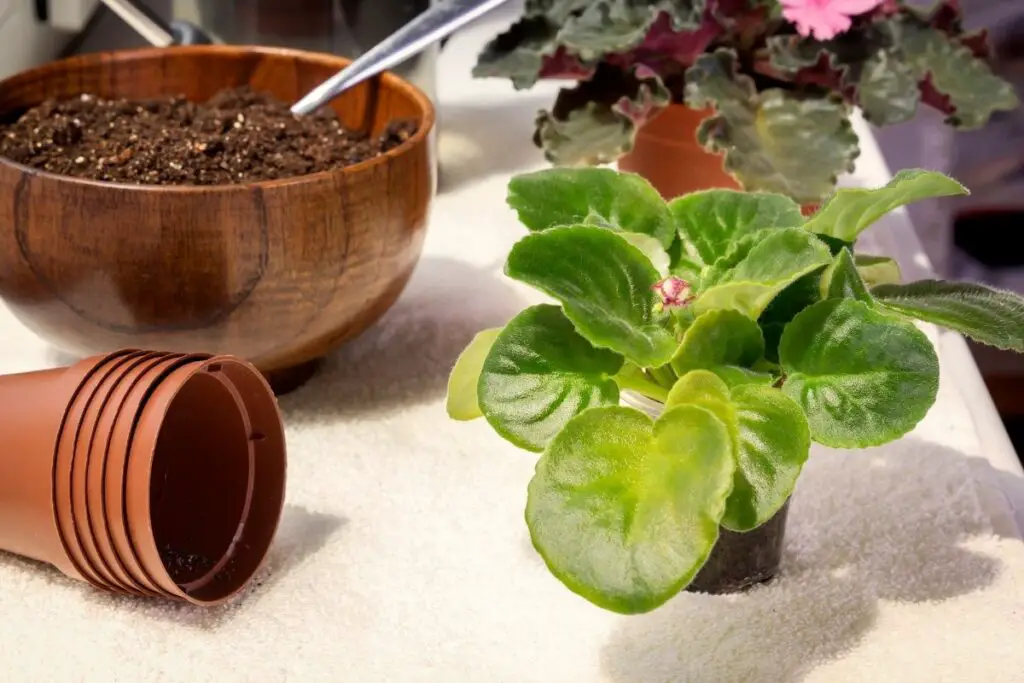
What are the causes which prevent blooming in African violets?
African violets are easy to grow plants. You can make your African violets bloom by taking care of their basic requirements.
But sometimes, for specific reasons, your plants may not bloom. It is vital to understand all the causes to take the right action to make your African violets bloom.
We will now discuss the problems that don’t let your African violets bloom along with their solutions.
The common reasons behind your African violets not blooming are:
- Inadequate sunlight
- Improper watering
- Low humidity
- Poor fertilization
- Inappropriate temperature
- Wrong pot size
- Wrong soil mix
- Pests and diseases
- Lack of pruning
Now, we will discuss each point in detail.
Inadequate sunlight
Inadequate sunlight can stop your African violets from blooming. These plants need indirect sunlight to produce flowers. If African violets get too little or too much light, they produce fewer blooms or no blooms at all.
Poor light will force the African violets to stretch towards the light, causing the plants to bloom less. On the other hand, too much light will cause sunburn, which limits the blooming capacity of African violets.
You should provide the correct and sufficient amount of sunlight to your African violets.
Improper watering
Improper watering can be the reason your African violets are not blooming. A proper watering schedule is vital for keeping your plant healthy. Both overwatering and underwatering can create a significant impact on your African violets.
This species does not like to sit in water for an extended period. If the soil remains soggy for too long, it will allow various kinds of diseases which can cause root rot to your African violets.
But if the soil gets less water, the African violets will not get enough moisture and nutrients, leading to no blooms.
Low humidity levels
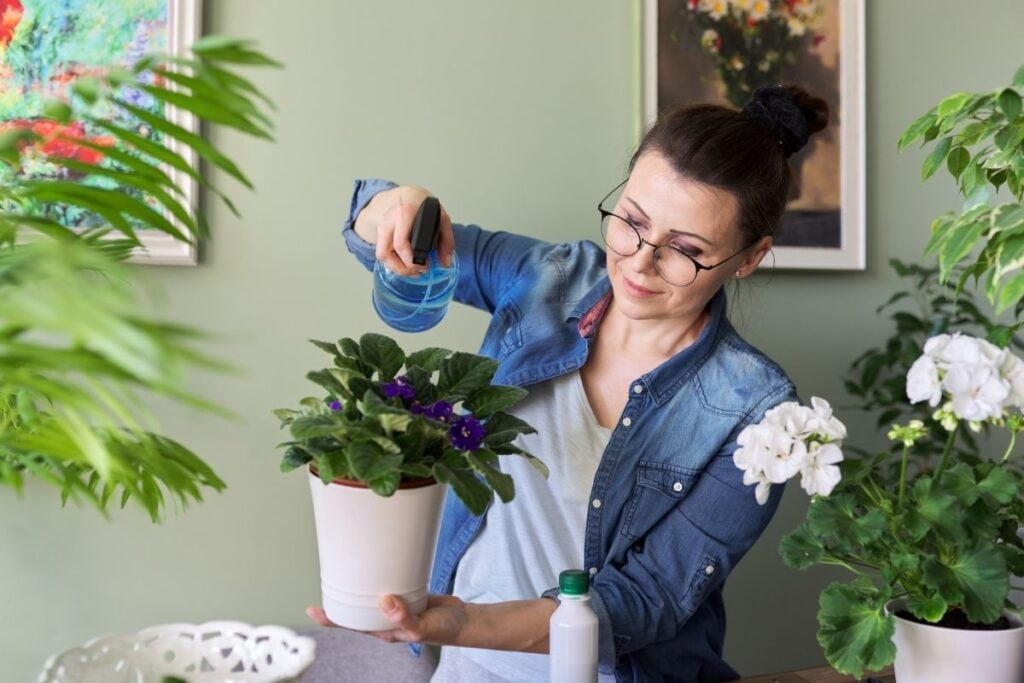
African violets require a humidity range between 50% and 60%. If the humidity goes below 50%, it will be too dry for them, making it difficult for the African violets to bloom.
When the humidity level is low, the African violets lose water through their leaves by transpiration, causing dehydration, due to which they stop blooming.
You need to provide more humidity to your African violets during low humid conditions for healthy growth.
Poor fertilization
African violets blooming depends on good fertilization. If you don’t provide them with adequate fertilizer, they will lack the energy to produce flowers.
Providing excess nutrients can also create a huge problem and can even kill the entire plant. So, you should always fertilize your African violets correctly, neither more nor less.
Looking for gardening supplies? We have tested 100's of products before recommending them to you guys. Check out our best pick below:
| Image | Gardening Supplies | Best Price? |
|---|---|---|
 Top
Top Top
Top | Raised Garden Bed Kit | Check On Amazon |
 | XLUX Soil Moisture Meter, Plant Water Monitor, Soil Hygrometer Sensor for Gardening, Farming, Indoor and Outdoor Plants, No Batteries Required | No Results |
 Top
Top Top
Top | 82 Pcs Garden Tools Set and Extra Succulent Tools Set | Check On Amazon |
 | Joeys Garden Expandable Garden Hose with 8 Function Hose Nozzle, Lightweight Anti-Kink Flexible Garden Hoses, Extra Strength Fabric with Double Latex Core, (50 FT, Black) | No Results |
 Top
Top Top
Top | Dual Chamber Compost Tumbler | Check On Amazon |
 Top
Top Top
Top | Sunnyglade Plant Stakes | Check On Amazon |
 Top
Top Top
Top | Organic Cold Pressed Neem Seed Oil | Check On Amazon |
 Top
Top Top
Top | Mighty Mint Gallon :-Insect and Pest Control Peppermint Oil | Check On Amazon |
 Top
Top Top
Top | Scotts DiseaseEx Lawn Fungicide | Check On Amazon |
 Top
Top Top
Top | Jacks Classic 20-20-20 All Purpose Fertilizer | Check On Amazon |
 Top
Top Top
Top | 30,000 Seeds Pollinator Attracting Wildflower Mixture | Check On Amazon |
 Top
Top Top
Top | Survival Vegetable Seeds Garden Kit-Over 16,000 Seeds | Check On Amazon |
Inappropriate temperature
African violets mostly bloom in warmer temperatures. Excessive hot and cold temperatures can cause direct damage to the foliage and roots and prevent blooming.
It becomes difficult for African violets to grow well in inappropriate temperatures, and it experiences many problems. For this plant, the temperature should be between 65°F and 80°F.
Wrong pot size
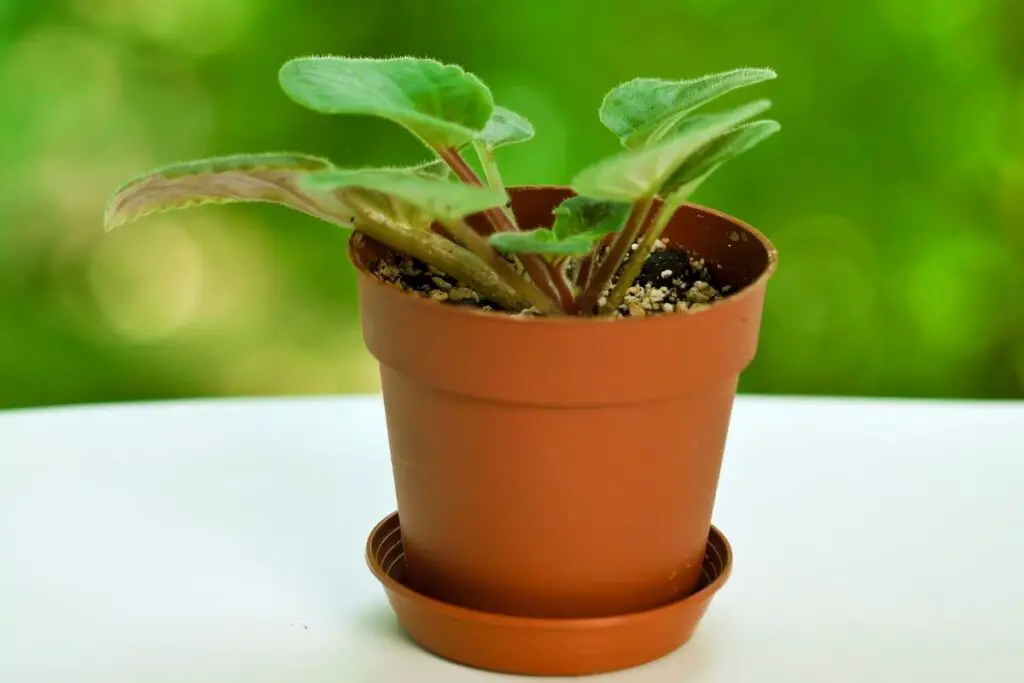
The wrong pot size can reduce the blooming in African violets. These plants prefer small pots to survive as they prefer to be root bound in small areas.
But too small a pot can also create a problem for African violets because of overcrowding. Therefore, you need to choose the right sized pot while planting your African violets or replace them with new ones.
Wrong soil mix
Soil mix plays a vital role for all your plants, including the African violets. If the soil is too dense, your plants will struggle to bloom. A heavy soil mix will not allow oxygen to pass in the root system and create a poor drainage system.
The pH level of the soil also determines blooming. African violets prefer slightly acidic soil with a pH value of 5.8 and 6.2. If the pH value alters, the plant will not absorb nutrients properly from the soil, and there will be no blooms.
Pests and diseases
If you see any wilted leaves and no blooms in African violets, it might be because of pests and diseases. Pests that suck out sap from the African violets can prevent blooming.
They make the entire plant sick by reducing the water and nutrient levels. If you notice dull African violets with no blooms, check whether pests have attacked your African violets or not. If yes, remove them as soon as you can.
Lack of pruning
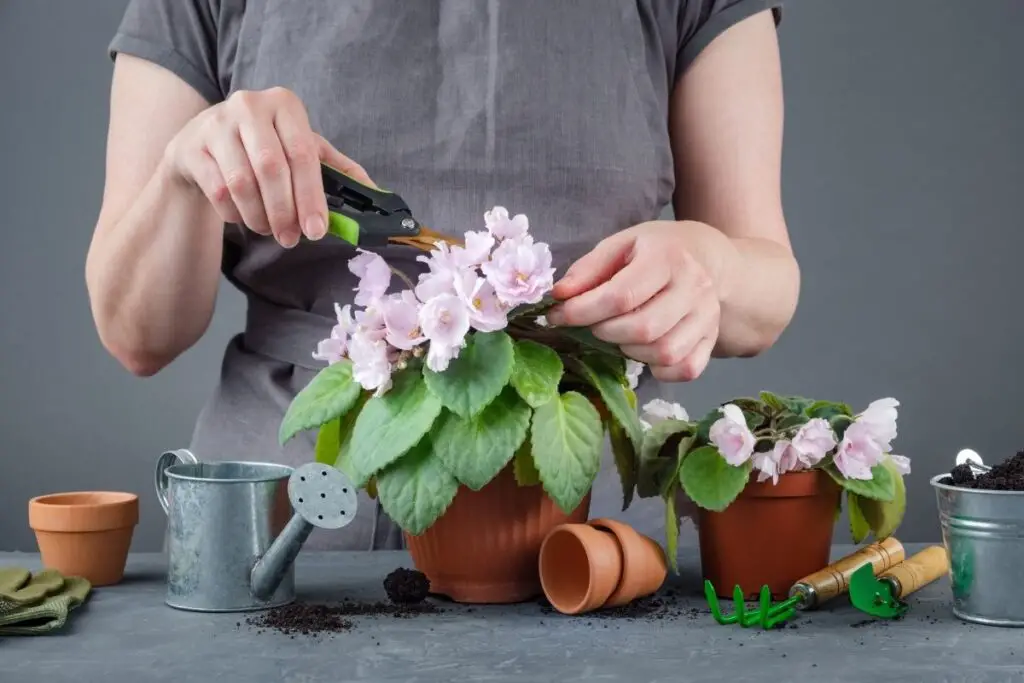
Lack of pruning is one of the leading causes that will lower the blooming rate in your plant. If you don’t prune your African violets, you will invite pests and insects that can cause damage to the plants.
You should always prune your African violets to encourage growth, enhance the plant’s natural shape, and make them look good.
How to get your African violets to bloom?
You can allow your African violets to bloom by following the care tips given below.
Provide sufficient sunlight
In case of low light:
- If your African violets are growing in a location with poor light, you should place them in another location where they will get at least 6 to 8 hours of indirect sunlight.
- Try to remove the obstacles blocking the light.
- In winter, place your African violets near an east-facing window to provide them enough sunlight without any risk of sunburn.
- Rotate the pot every few days to let the light fall on all the leaves.
- You can also use artificial lights for your African violets, such as grow lights, LED lights, etc.
In case of too much light:
- Choose the location carefully. The light intensity should be moderate.
- Avoid keeping your African violets in direct sunlight.
- Move your African violets to an area with indirect sunlight.
- In summer, place your plant near a north-facing window to protect them from the harsh rays of the sun.
- Water your African violets to recover your plant from sunburn.
Also read: What Kind Of Light Does An African Violet Need? (African Violet Light Requirements)
Provide your plant with adequate water
If you have underwatered your African violets, you should:
- Water your African violets every other day to prevent underwatering.
- While watering, allow water to soak the soil thoroughly and let the excess water drain out.
- Avoid excessive heat as it can significantly increase evaporation from the soil.
- For proper watering, you can use the saucer method. You have to water from below by placing the pot in the saucer and filling the saucer with 1-inch water. Then allow your plant to sit for about 30 minutes and pour off the excess water.
- Keep checking the moisture level of the plant to avoid underwatering.
In case of overwatering:
- Always check the moisture level before watering Your African violets.
- You can use a water sensor like a thermometer for measuring the water level of the soil.
- If you don’t have a water sensor, stick your finger 1 to 2 inches into the soil and check the tip. If you find the soil is wet, it means the soil has enough moisture, and you should stop watering your African violets immediately.
- Make sure your plant’s pot has a sound drainage system, so that excess water drains out.
- Provide them with 4 hours of indirect sunlight to prevent them from overwatering.
- Remove dead and dying roots and keep only those roots that are healthy.
- Create an additional space between the roots to allow oxygen to reach the root zone.
- Avoid watering your African violets at night.
- Change the watering schedule according to the season.
Also read: How Often Should African Violets Be Watered? (African Violet Water Requirements)
Increase the humidity
African violets, like most of your houseplants, prefer high humidity. So if the humidity is low, you must follow these steps.
- You can use a humidifier to maintain the correct humidity levels inside your home for African violets.
- You can keep the other plants together with African violets to increase the humidity among them.
- You can also increase humidity by using a pebble tray where you place pebbles and water in a drip tray and place your plants on top of the tray.
- Avoid locations with excess air movements as it causes extreme water loss from the plant’s surface.
- Avoid placing them near radiators or other heating sources as the humidity is low in those areas.
Also read: Do African Violets Like Misting? (+Humidity Guide)
Provide proper fertilization
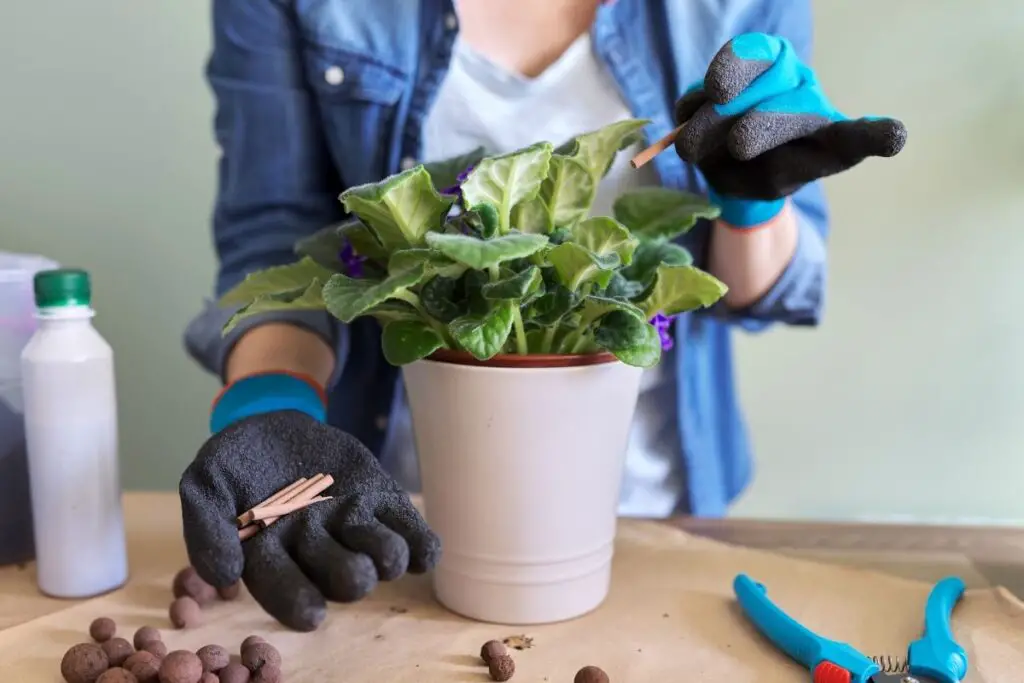
Without enough nutrients, the African violets won’t have the energy to bloom. So, you must:
- Add organic compost to the soil to provide enough nutrients.
- Use a fertilizer that contains nutrients like phosphorous, nitrogen, and potassium.
- Provide fertilizer with the N-P-K ratio of 14-12-14 for maintaining a proper balance.
- Always follow the instructions given in the labels to avoid inconveniences.
You must also avoid overfertilizing your African violets as that leads to even more problems.
- To remove the excess fertilizer, flush the soil surface with water.
- You can flush it by immersing the soil with water until it drains out from the bottom of the container and let the water run for straight 30 minutes.
- You can also replant your African violets in a new pot with fresh soil.
- Always use a liquid fertilizer and add enough water to them to avoid over-fertilization.
Also read: What Kind Of Fertilizer Is Good For African Violets? (+Best Picks)
Maintain the temperature
- You should maintain temperatures between 70-80°F and night temperatures between 65-70°F.
- You can keep a device called a thermostat to maintain the temperature inside the home.
- Decrease the watering rate in case of low temperatures and always check the soil’s moisture before watering it.
- To protect the plant from lower temperatures, spread at least 2 to 3 inches of mulch around the soil surface and encourage bloom.
- You can place a sheet, plastic, or blanket to protect the plant from cold conditions during freezing nights.
Choose the correct pot size
- Always choose a pot that is 1/3rd the size of the plant. In other words, the plant diameter should be 3 times the diameter of the pot.
- Make sure you don’t plant your African violets into a pot bigger than the 1/3rd diameter of the plant.
- While choosing the pot, always check whether it has a sound drainage system or not.
- Too small pots can also create a problem for African violets, so always choose wisely, not too big and not too small.
Also read: What Kind Of Pot Does An African Violet Need? (Pot Type+Size)
Choose the suitable soil mix
- Always use a light, loose, and well-draining soil mix for African violets.
- You can use a soil mix that includes perlite, vermiculite, compost and peat moss in the ratio of 25:25:25:25.
- Using a testing kit, measure the soil’s pH level and make sure the pH value ranges between 5.8 and 6.2, not too high and not too low.
Also read: What Kind Of Soil Is Best For African Violets? (+Best Soil Mix)
Protect the African violets from pests and diseases
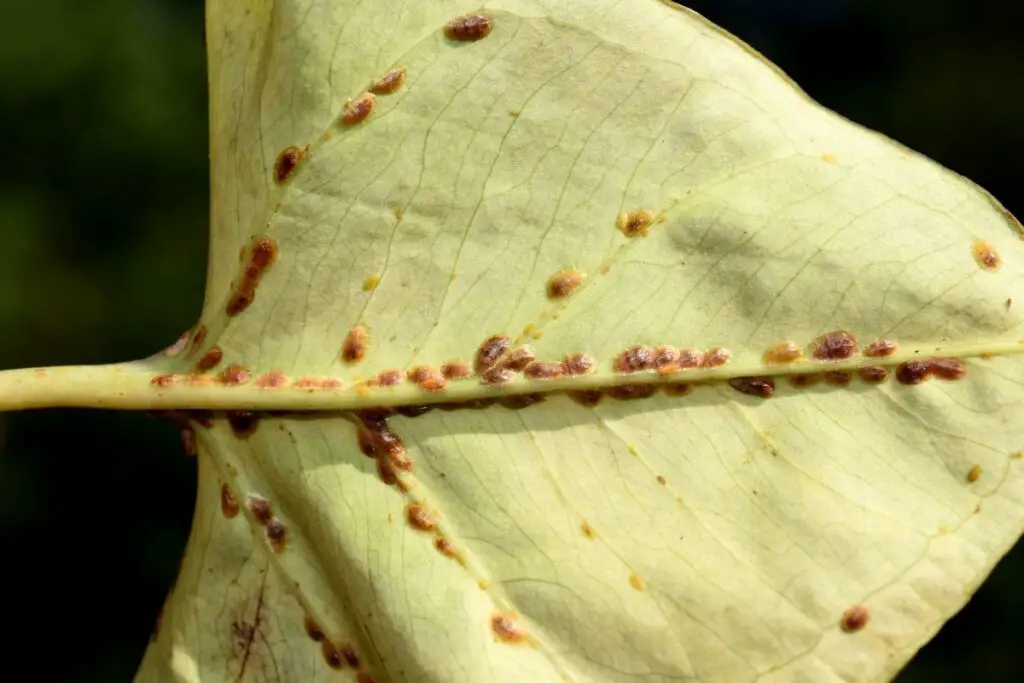
- Look after your African violets frequently and check whether they are affected by pests and diseases.
- If yes, wash your plant with a strong spray to remove the visible pests.
- You can use insecticidal soap while spraying your plant.
- You can also use neem and horticulture oil to remove the pests.
- Another method you can do is, dip cotton balls or swabs in alcohol to wipe the visible pests.
- Prune the infected leaves of the plants to save the healthy parts.
- Try not to keep them in humid conditions while they are recovering from pests.
Also read: How To Get Rid Of Bugs On African Violets? (Signs+Treatment)
Prune your African violets frequently
- Pinch off the old blooms and leaves by using your thumb and forefinger.
- You can use sterilized scissors and cut all the leaves or stems.
- Make sure the cut is clean and avoid cutting the main stem.
Also read: Why Is My African Violets Not Blooming? (Causes+How To Fix)
Source: Wikipedia, African violet: Classical breeding, African Violet Society of America, In vitro propagation of African violet, University of Florida, North Dakota State University, The University of Georgia.
